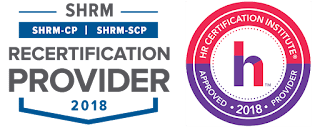A Core Risk Management Skill for Auditors and Facilitators: Effective Analysis
OVERVIEW
The approach to be presented for the core risk management skill
of analysis is based on what is termed the logic diagram, which has three
building blocks: findings, conclusions, and recommendations. Each of these
three building-blocks will be defined, and then tests for their effective use
will be presented.
Then, the session will present the analysis process, for using
and completing the logic diagram, the key steps being:
- Step #1 -- Develop key hypotheses, which during the
process will be converted to conclusions
- Step #2 -- Specify the data packages, which will lead
to findings
- Step #3 -- Speculate on options, to arrive at
recommendations.
Two process controls will be presented. The first is to assure
that only appropriate key hypotheses are identified and used, in order to be
efficient and effective. The second is that the process is managed by
developing and completing a relevant logic diagram.
Some further concepts and aids to enhance effective analysis
will be presented.
In closing, there will be a review of the key concepts, along
with a case study, and suggestions about how to apply these key concepts as a
core risk management skill.
 |
| Verified Webinar |
WHY SHOULD YOU ATTEND
Effective analysis is a core risk management skill for
facilitators because the result of facilitation is to get agreement from the
participants on what should be done, and getting agreement across disparate
functions is usually tough to do. Similarly, it is a core risk management skill
for both internal and external auditors because their analyses should lead to
actionable recommendations related to risk management. Getting agreement and
getting buy-in on recommendations is tough, and it has been shown that use of
the tools presented in this course will increase effectiveness and efficiency
because they enable greater understanding and acceptance of those who need to
be convinced to agree and to do something.
AREAS COVERED
This session is about analytics as related to problem-solving,
to recommending, and by getting buy-in to making things happen. It deals with
why, what, how, where, when and who, for analysis as a core skill.
- Why we analyze is straightforward. It is what we have
to do when problems – or opportunities – are expected and considered in
risk management, and when we conduct routine work, such as measuring and
monitoring associated with risk management.
- What we do to analyzeis to apply critical thinking
skills that lead to effective recommendations that can be understood and
accepted – and acted upon – by management. The approach also is efficient,
so that no effort is wasted and no “do-overs” result.
We will delve into critical thinking skills, which sometimes are
overlooked as an analyst focuses on big data and its use, which leads the
analyst simply to accept the utility of bulk data and what trends or groupings
emerge from it. Big data is useful but does not displace basic critical
thinking skills. And, thinking involves logical analysis, of which there are
two kinds: deductive reasoning, and inductive reasoning. Both will be defined
and explained, how and when each is appropriate for use, and examples
given.
The product for the core skill of analysis is the logic diagram,
which following its definition will be expanded to its three components of
findings, conclusions, recommendations. Each of these three building-blocks
will be defined, and then will be shaped in terms of tests for its effective
use, and then will be shown in use.
Then, we will get into the process for building a logic diagram.
The key steps include the following.
- Step #1 is to develop key hypotheses, which through
the work can become conclusions. But, to conclude something, after
conjecturing about a hypothesis, the hypothesis has to be valid; so, the
first step is to form an hypothesis.
- Step #2 is to specify the data packages. In order to
conclude something – to convert a hypothesis to a conclusion -- things
have to be found that enable and support that conversion of the
hypothesis to a conclusion.
- Step #3 is to speculate on options. Conclusions lead
to results, to recommendations. But, to get to recommendations, options
have to be considered options so that the best fit recommendation can be
made.
In order to make this process work, there are two types of
controls. The first control is that appropriate -- and only appropriate -- key
hypotheses are identified. The second control is that the going-forward process
is organized into a relevant logic diagram. More specifics will be providedon
each of these two types of controls.
Following a discussion and presentation of each of these – the
process, the controls, and some concepts and aids – key concepts will be
reviewed, and a case study will be presented.
LEARNING OBJECTIVES
The course objective is to present an approach to analysis, and
the tools to support that approach, for effectiveness and efficiency. These
tools are for thinking through the design, scope and conduct of an analytical
project. This approach to analytics is not merely big-data number crunching and
organizing, which can be used as a component of an analysis project but is not
analysis leading to actionable recommendations as such.
WHO WILL BENEFIT
Facilitators and internal and external auditors will benefit
from this course because they will have developed new tools that will make them
more productive in undertaking projects dealing with risk management, internal
control and compliance, and other projects dealing with complex outcomes.Also,
their managers and related executives –C-level positions, board members,
finance and operations and human resources managers and executives, as examples
– will benefit because they will learn how analysis projects should be scoped,
what skills are needed to do them, and what should be the outcomes from those
who conduct such projects.
For more detail please click on this below link:
Email: support@trainingdoyens.com
Toll Free: +1-888-300-8494
Tel: +1-720-996-1616
Fax: +1-888-909-1882



Comments
Post a Comment